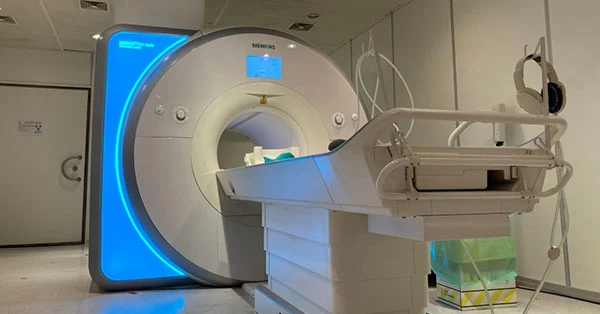APRIL 10, 2024
Revolutionizing MRI Efficiency: A Three-Tiered Strategy to Reduce Energy Consumption and Carbon Footprint in Radiology Practices

Among
the suite of modern imaging technologies, magnetic resonance imaging (MRI)
stands out as particularly energy-intensive, commonly used in clinical
settings. A network of radiology practices adopted a three-tiered strategy to
enhance energy efficiency in their MRI operations.
Published on February 26, 2024, by Doris Pischitz, the
report highlights the significant environmental impact of the healthcare
sector, which, if considered a nation, would rank as the world’s fifth-largest
emitter of greenhouse gases. Specifically, for independent imaging centers, the
energy expenditure on imaging machinery can account for over 19% of total
energy costs.
The link between carbon dioxide emissions and energy
expenses became more pronounced in 2019 with the installation of a new MRI
system at a Munich facility of DIE RADIOLOGIE. The team there initiated
productivity improvements to maximize the utility derived from each kilowatt
hour (kWh) of energy. The urgency of these measures escalated with the surge in
energy costs following the outbreak of conflict in Ukraine.
A critical look at the radiology department’s energy
consumption identified MRI as the primary energy consumer, according to Prof.
Mike Notohamiprodjo, MD, Managing Director at DIE RADIOLOGIE in Munich,
Germany.
Step 1: Introduction of Eco Protocols
Initially, DIE RADIOLOGIE focused on reducing the length of
numerous protocols, ensuring this did not affect the quality of patient care.
Since longer MRI scans equate to higher energy use, a set of "eco"
protocols for frequently used scans was developed to lower energy consumption.
This was particularly impactful for musculoskeletal examinations, a significant
portion of the network’s diagnostic workload, where scan times were reduced by 30
seconds to a minute per sequence. These adjustments not only saved energy but
also allowed for servicing more patients.
Step 2: Adoption of Eco Power Mode
Subsequent efforts involved collaboration with Siemens
Healthineers for a fleet analysis, leading to the employment of a
software-based Eco Power Mode. This feature lessens the MRI system’s energy use
during standby periods or shutdowns. Given that 60-70% of an MRI’s energy is
dedicated to magnet refrigeration—a process not needed constantly, especially
during off-hours—implementing Eco Power Mode showed a reduction in energy
consumption by 30% per scanner annually, equivalent to the energy usage of four
two-person households.
Step 3: Leveraging Artificial Intelligence
The final step involved embracing protocol acceleration
through artificial intelligence (AI). Utilizing deep learning algorithms, such
as those in Deep Resolve Boost, enabled shorter acquisition times and enhanced
image quality, effectively balancing the challenging trio of time,
signal-to-noise ratio, and resolution. An examination of energy use and
protocol efficiency on a MAGNETOM Sola system illustrated further reductions in
acquisition times and improvements in image quality over previous optimisations.
Cumulative Impact
The cumulative application of shortened protocols, Eco Power
Mode, and AI-assisted imaging facilitated a notable drop in energy consumption
across the network's MRI operations. This approach not only elevated image
quality but also increased the number of patients that could be examined. With
the implementation of these strategies across their 12 MRI systems from Siemens
Healthineers, DIE RADIOLOGIE anticipates annual savings of €250,000 and a
reduction of 216 tons in CO2 emissions, paralleling the environmental footprint
of 17 two-person households.
Source: Three steps to lower energy consumption in MRI